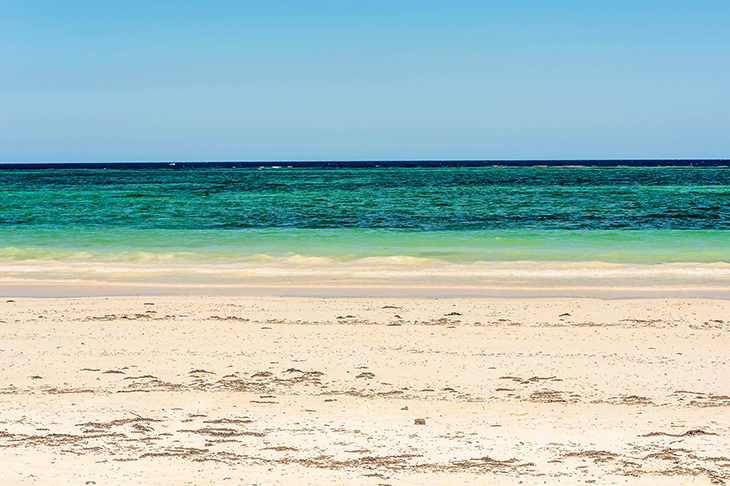Malindi, Kenya
I could measure my whole life in the summers I’ve spent on the beach in front of our family’s seaside house on Kenya’s north coast. Walking along the white sand, eyes down among the flotsam, seaweed, cuttlebones and ghost crabs, for decades I have been finding shards of blue and white porcelain washed up from some lost wreck. I like to imagine they are from one of 15th-century Chinese explorer Zheng He’s ships, which carried a live giraffe back from the East African coast to the emperor in his capital. I wonder if in a lifetime I might find enough broken pieces to make an entire bowl. That seems as likely as making all my plans in life come together, but year after year I keep finding the shards.
I have a photo of me as a small boy following my father on this beach, stretching to step inside his big footprints. Dad’s ashes were scattered in the waves. In coral pools at low tide, my mother first taught me how to swim, and covering the walls of our house are her paintings of iridescent reef fish. In old age she began painting the ocean, white horses and swells in angry storms, and as her sight blurred the seascapes became almost abstract. Now 94 and living in Nairobi, she saw the house last year and it’s not clear when she will come again — but I expect one day she will be joining Dad on the incoming tide.
The first girl I ever kissed was here on the high-water mark after a disco — and my teenage hopes were dashed when the boy she was supposed to be going steady with suddenly turned up that same evening and whisked her away. Much later I brought Claire to this place and she still says swimming here in the evenings is what makes her happiest. Our two children Eve and Rider spent much of their early years living at the beach and it’s where we taught them to surf. They are in the waves every day.
When I was a boy I remember the reefs were alive with colorful fish and corals. At low tide we found speckled moray eels, red crabs and countless kinds of seashells. Stingrays fluttered in the sandy pools and out to sea were whales and porpoises. The place was heaving with life. The ornithologist Sir Peter Scott came to stay and was amazed by the diversity of creatures he saw. These days dogs are not allowed on the beach because they might frighten marine-park visitors, but I remember when George and Joy Adamson had a house down the beach and walked their lions along the sand. George’s brother Terence taught me how to divine for water using old metal coat hangers.
That world is long gone. Acres of the coral gardens have been bleached and broken. The octopus still waft about in the pools but the lobster and seashells are mostly gone. The bright colors have disappeared from the reef below the beach and much of it is dead, covered with algae. Where kingfishers once hovered, Indian house crows swoop about. Out to sea, where Vasco da Gama once sailed towards India from here, fishing trawlers churn up and down. Toothbrushes from Asia, flip-flops from Arabia and plastic bottles from everywhere dot the high-water mark.
Yet despite all these changes, the beach remains the loveliest place in the world. Buses bring parties of schoolchildren, many of whom have never seen the ocean, never felt the beach sand between their toes, and their cries of joy fill the air. Three species of turtle nest at different times of the year in front of the house, protected by the local wildlife rangers. Every year we see shoals of baby sharks in the clear shallows. Out to sea we glimpse humpback whales leaping and, rather than diminishing, their numbers seem to be growing each year. In the outer reefs the corals, so damaged in the late 1990s when the water temperatures warmed, are coming back in flowering sprays that are astonishing because they seem to be doing so well. Supposedly the oceans are rising because of climate change, but our beach is growing bigger and whenever there is damage to the marine environment, when protected it appears to bounce back very quickly. When we depart our place in Malindi we all go to the beach and sadly say goodbye to the sea, until next year.
This article was originally published in The Spectator‘s UK magazine.


















